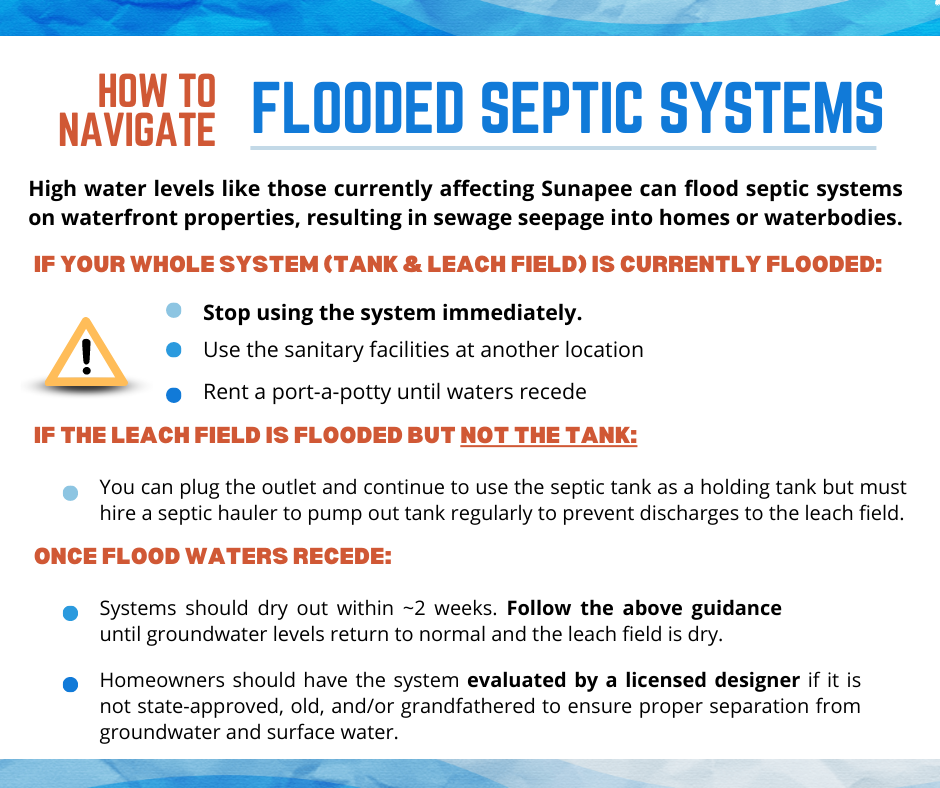Guidance for Flooded Septic Systems
How to Manage a Flooded Septic System
High water levels like those currently affecting Sunapee can flood septic systems on waterfront properties, resulting in sewage seepage into homes or water bodies. The following guidance has been provided by the NH Department of Environmental Services, Subsurface Systems Bureau to help homeowners respond to flooded septic systems.
If your whole system (tank & leach field) is currently flooded:
- Stop using the system immediately.
- Leave the structure vacant if it is not a primary residence
- Use the sanitary facilities at another location
- Rent a port-a-potty until waters recede
If the leach field is flooded but not the tank:
You can plug the outlet and continue to use the septic tank as a holding tank but must hire a septic hauler to pump out tank regularly to prevent discharges to the leach field. Depending on the size of the home and number of occupants, pump-outs may have to occur anywhere from once daily to once weekly. Homeowners should contact a licensed septic system designer to develop a replacement plan for the damaged system. Flood insurance or homeowner insurance may pay for repairs to damaged systems depending on the terms of the policy.
Once flood waters recede:
- State-approved systems are expected to function as normal once the tank and leach field dry out (~2 weeks). Follow the above guidance until groundwater levels return to normal and the leach field is dry.
- Homeowners should have the system evaluated by a licensed designer if it is not state-approved, old, and/or grandfathered to ensure proper sealing and adequate separation between groundwater and surface water.


